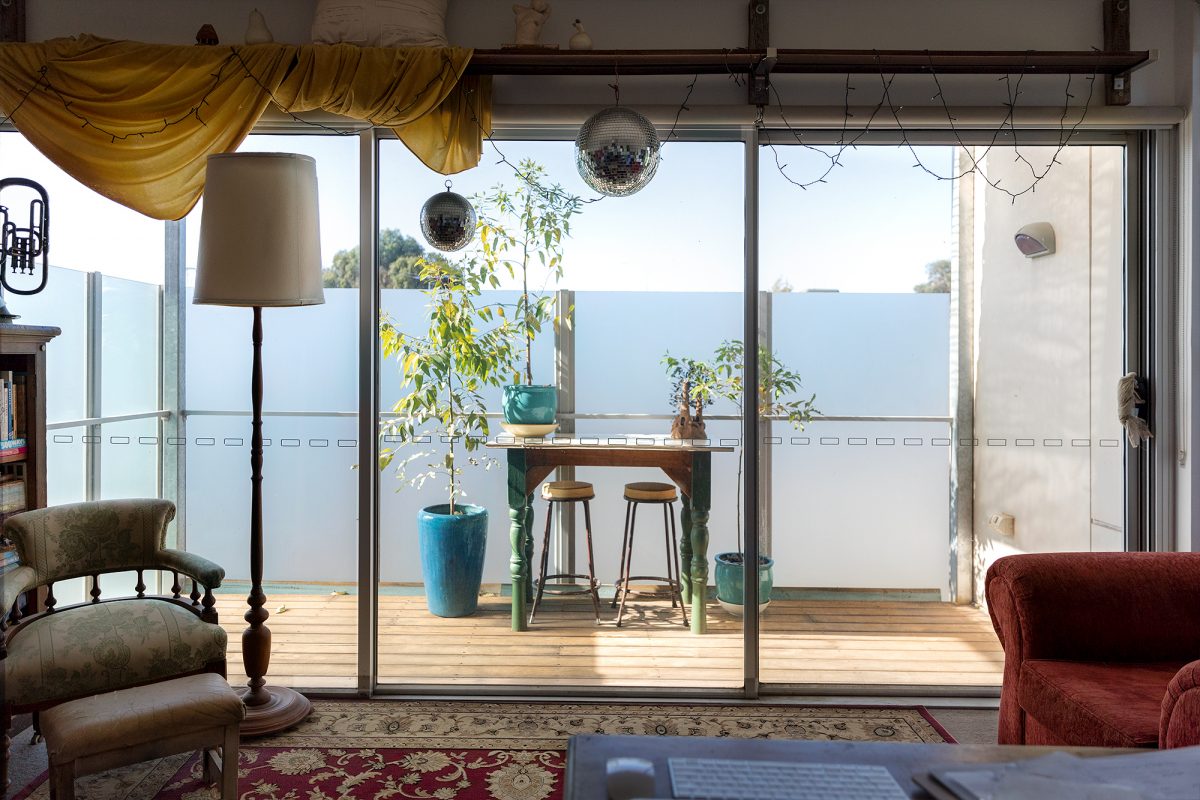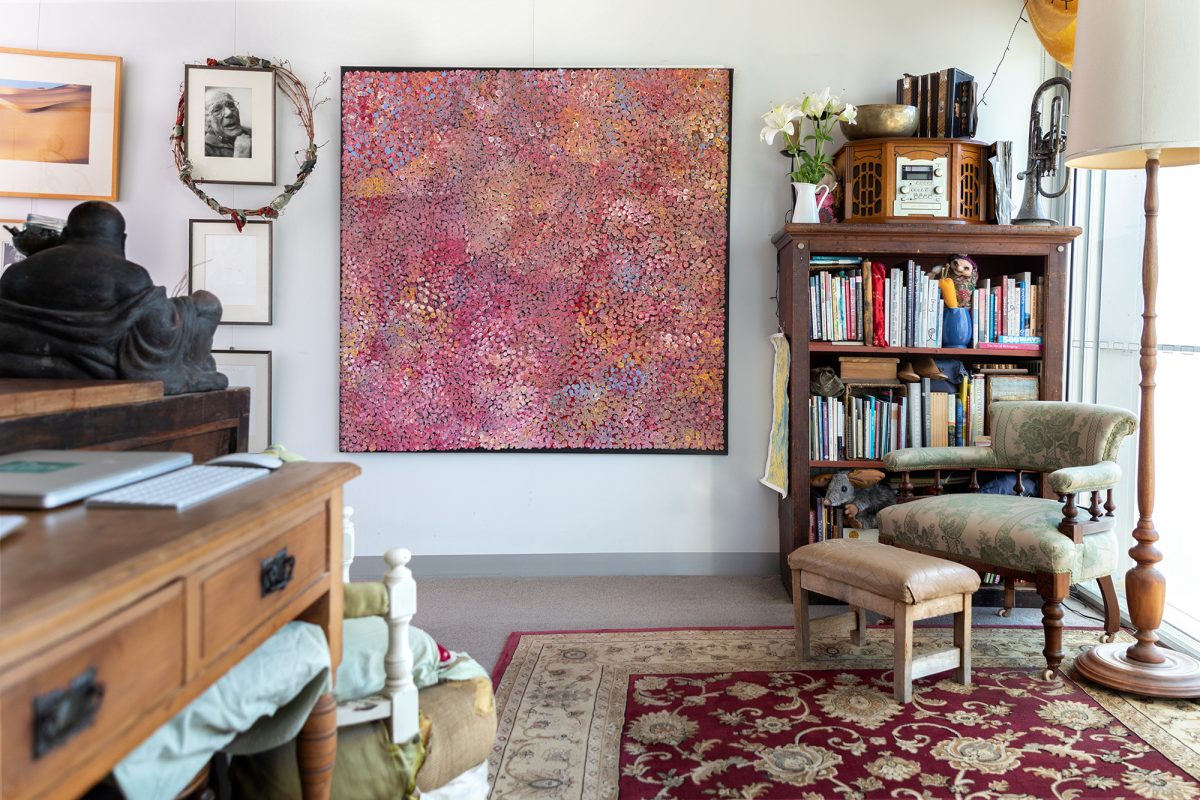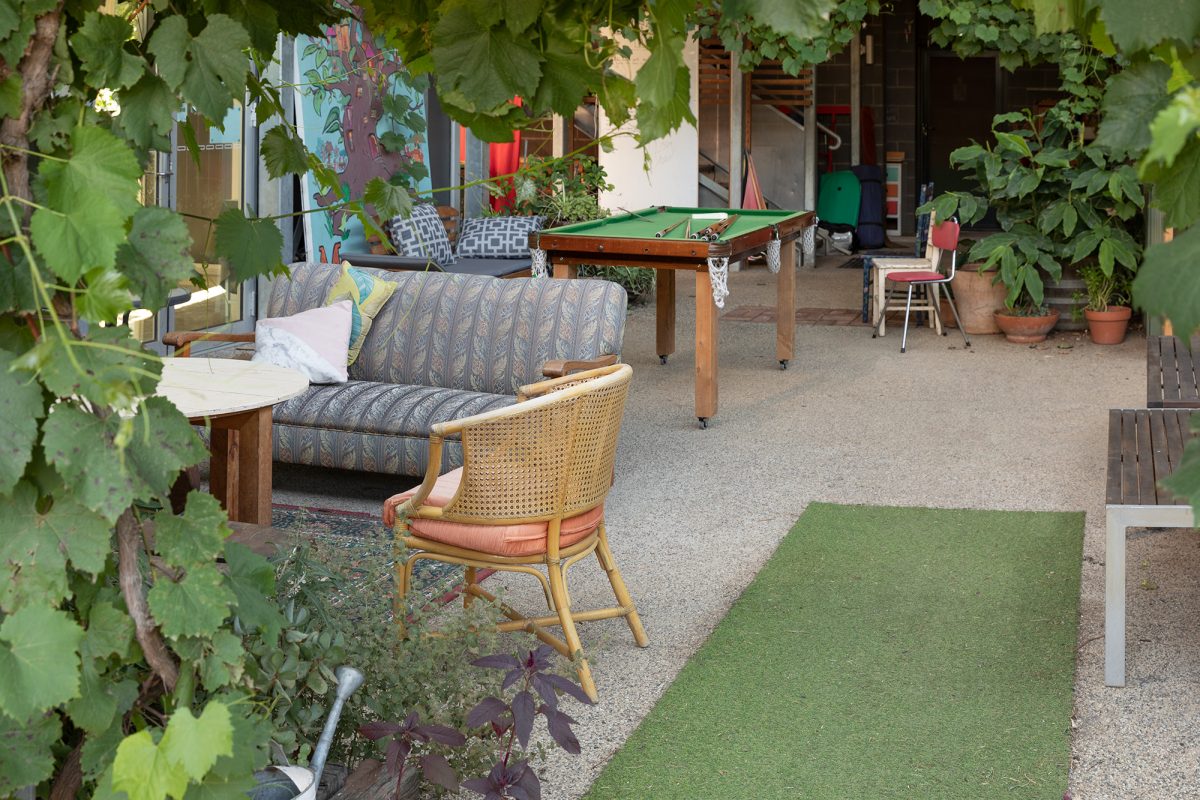Transformative change in Melbourne’s Murundaka co-housing

In the Melbourne suburb of Heidelberg Heights, amidst the uniform rhythm of large single-family homes, one lot stands out. Its tall trees, myriad of parked bikes and the double-height windows of the large common house announce from afar that here, life is lived with a fuller breath. This is Murundaka, an environmentally and community-minded housing co-operative. Built as a courageous prototype for a kind of shared living still rarely seen in Australia (though common across Europe), Murundaka today showcases how much we can gain when we pool resources for the common good.
Housing co-operatives in Australia are not rare – contrary to perception. However, most commonly they consist of a number of single-family homes peppered across wide areas of the city: the co-operative structure holds them together in a shared ownership and decision-making structure. Murundaka is different. Here, members of the co-operative – 18 households, comprising 25 to 35 people – live together across two apartment buildings that share an expansive garden and a large common house. Shared facilities include a library and a music room, laundry and bathroom, guest rooms, and an impressive rooftop solar farm. The common house has a fully stocked kitchen with two large island benches, twin ovens and a coolroom, and many mismatched couches: here is where communal dinners and meetings take place. The garden includes a barbecue and chicken area, cultivated vegetables and wild, weedy patches. The shared spaces are large, relaxed and welcoming. On the day we visit, children are spilling over from the adjacent playground, while a group of residents is sitting in the backyard, having a chat.
The site on which Murundaka stands was created by bringing together three standard house blocks. Two low-rise apartment buildings (three storeys each, with nine 1- to 4-bedroom apartments, all fully self-contained) replaced three single-family homes, one of which had been the home of Giselle Wilkinson, one of the founding members of Earth CERC (‘Common Equity Rental Cooperative’). The 35-year-old housing co-operative had owned a number of homes scattered around Heidelberg, Northcote and Rosanna. However, many of its members were getting older and were interested in a more community-based housing model, such as co-housing, where member households live together on a single block, popular in Scandinavian and German-speaking countries. After receiving support from the Victorian housing co-operative umbrella organisation, CEHL (Common Equity Housing Limited), in 2009 Earth embarked on turning their vision into reality.

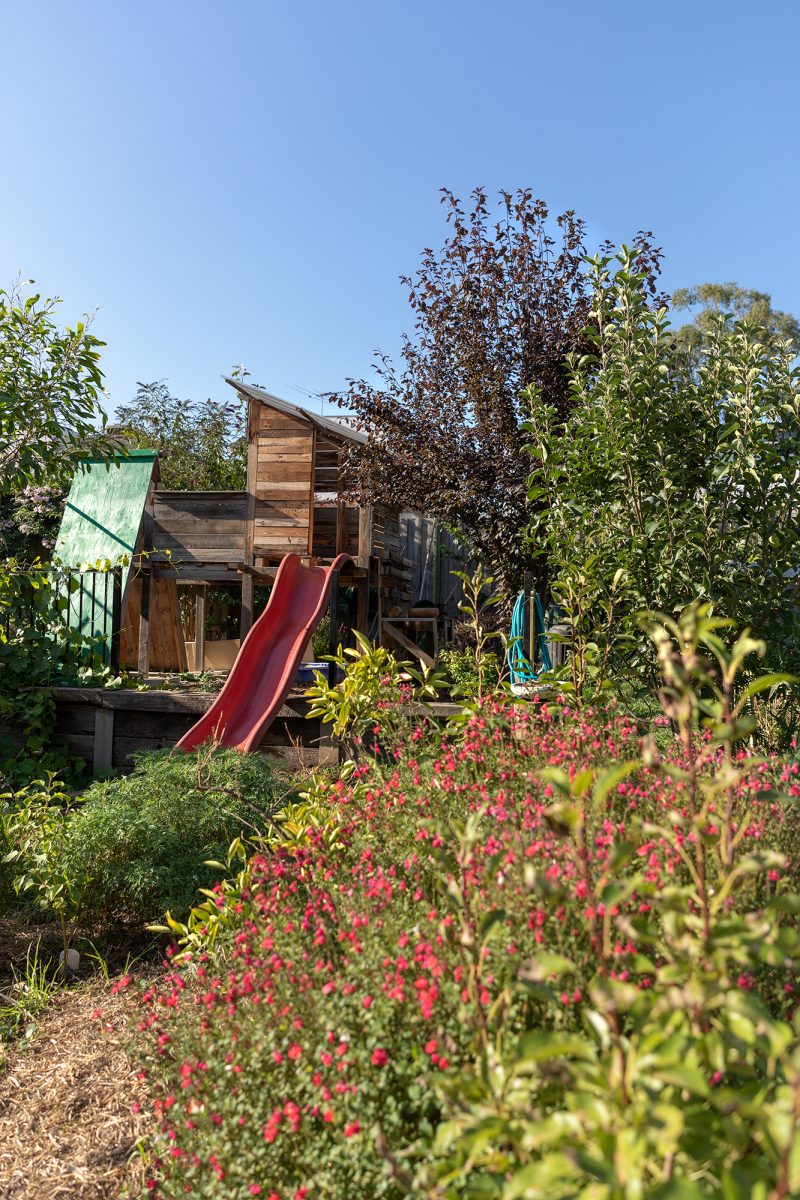
“We were originally looking at a mixed-equity model, so some people would have bought in, and some people would have been renting – and everyone would have been a member of the co-operative and participating in the decision-making,” Jessica Leslie, Murundaka resident, tells us. But the planning was taking stage just after the Global Financial Crisis, when stimulus funding was available for new housing solutions. Federal funding freed the co-op from the need to raise construction finance upfront – instead, Murundaka became Australia’s first collocated, fully rental co-operative. Every single member of Murundaka today pays below-market rent, capped at a percentage of their income, and enjoys full security of tenure.
For those used to straight-forward home ownership, Murundaka’s co-operative model can seem dizzyingly complex: residents do not own the home they live in, but they are members of the co-operative itself, which owns shares in CEHL, which in turn owns Murundaka’s land and buildings (as well as buildings of other member co-operatives). All co-op members vote to appoint the CEHL board of directors. As Dave Ingliss, another resident, succinctly puts it: “CEHL owns everything, and we own CEHL.”
We can’t always be looking at greenfield sites and going out, away from where the infrastructure and the services are. Most people live in the suburbs around the world, so the suburbs is where the change has got to happen.
Part of the rent goes to CEHL directly, and the rest remains with Murundaka, where it’s used to finance the cost of the buildings and ongoing maintenance, construction and organisational costs. All members are involved in the various operations that make Murundaka a community. There are communal dinners, monthly meetings, an annual retreat where long-term decisions are made and ideas turned into concrete projects, and a host of focussed workgroups that are responsible for everything from finance to policy to the ways waste is reduced and turned into resources.
One big, recently completed project is the Solar Festival, part of the more comprehensive Energy Freedom Project, a fundraiser to install a rooftop solar farm, with the eventual aim to replace all gas stovetops and hot-water boilers with electric and go fossil-fuel free. “Some time in the next eight months our loans will be paid off, and then we’ll have a meeting to decide whether to reduce our power bills, or use the extra money to install more solar panels,” says resident Dave Ingliss, an IT professional, who has lived here for five years with his partner. “But we’re also looking to see whether we can have the whole co-op on one power bill, so that we pay only one supply charge.”
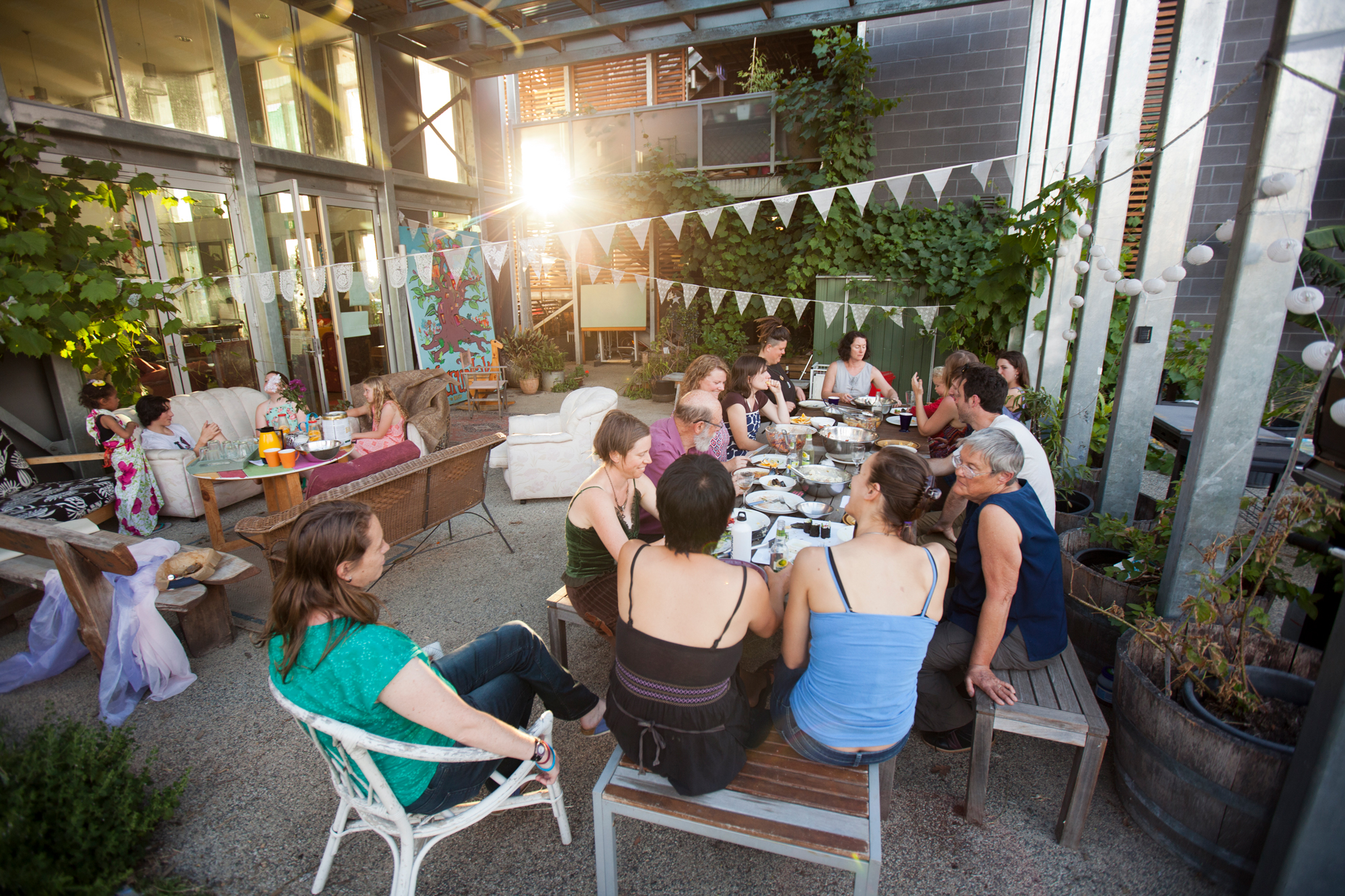
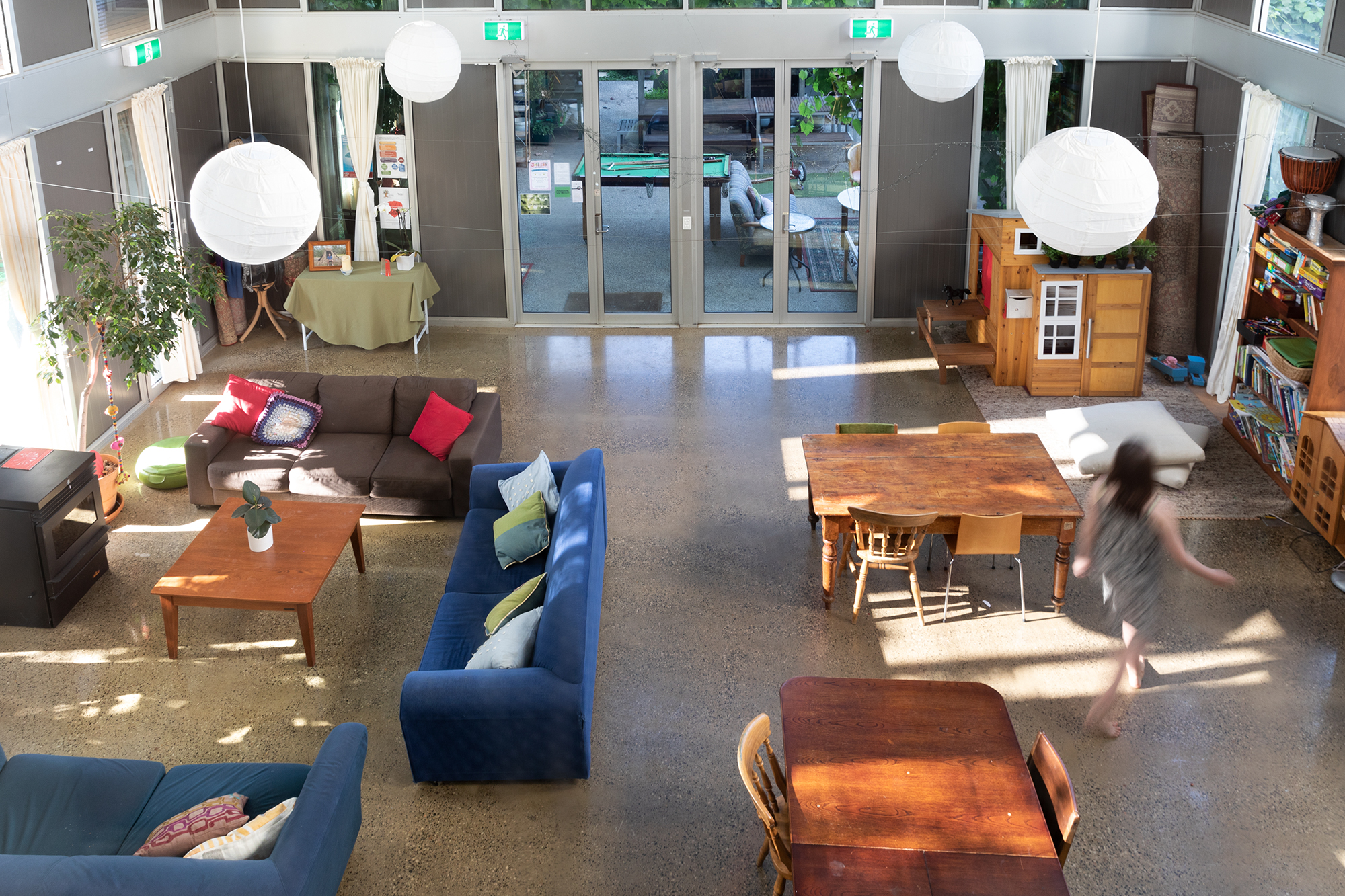
Share-owned electric vehicles and battery power storage are also in the pipeline. Another project they’re hoping to get off the ground is turning the car park into underground water storage and harvesting rainwater. “We’ve got great structures and traditions in place that allow us to come together and deliver really great things for each other,” says Jessica.
Many members choose to only work part-time to allow time for meaningful community engagement. “I’d put in at least a full day of work per week right now, but that varies across time,” Jessica Leslie says. “On average, our members put in 2-10 hours per week into the running of our community.”
Jessica, who lives in a three-bedroom apartment with her two children, is a full-time Masters student in art education. “My rent is lower than private rental, so for me there is a balance. But of course, if I left, I wouldn’t keep any of the value I’ve created: the value stays with the program. What I would take with me is well-honed skills in a range of areas, including group facilitation, meeting planning, public speaking, consensus decision-making and event management.”
When choosing new members to move in, Murundaka looks for people who are adaptive, self-motivated, with good conflict resolution skills, who can get involved and contribute to the community, with an eye for the community’s current needs. New residents sign a participation agreement, which stipulates that members have to attend 75% of the meetings, including the annual retreat, and join one of the eight committees. The agreements are not monitored, but informally maintained. “But the truth is that what we ask people for is the bare minimum required for this place to function.”
“We’re dealing with a lot of varying expectations around the behaviour for families, as well as individuals,” Jessica adds. “Things you might not consider to be an issue, or never think about, could really be a bee in someone else’s bonnet.”
“Living in Murundaka is different from the rest of your life, and the rest of your life doesn’t set you up for this,” says Dave. “Most people are used to little back yards. I don’t have kids, but here you can’t escape kids, because this is your back yard,” he gestures towards the sprawling central garden. “For example, all the kids form one group pretty quickly. As a parent, you [can’t] impose one set of rules on your child.”
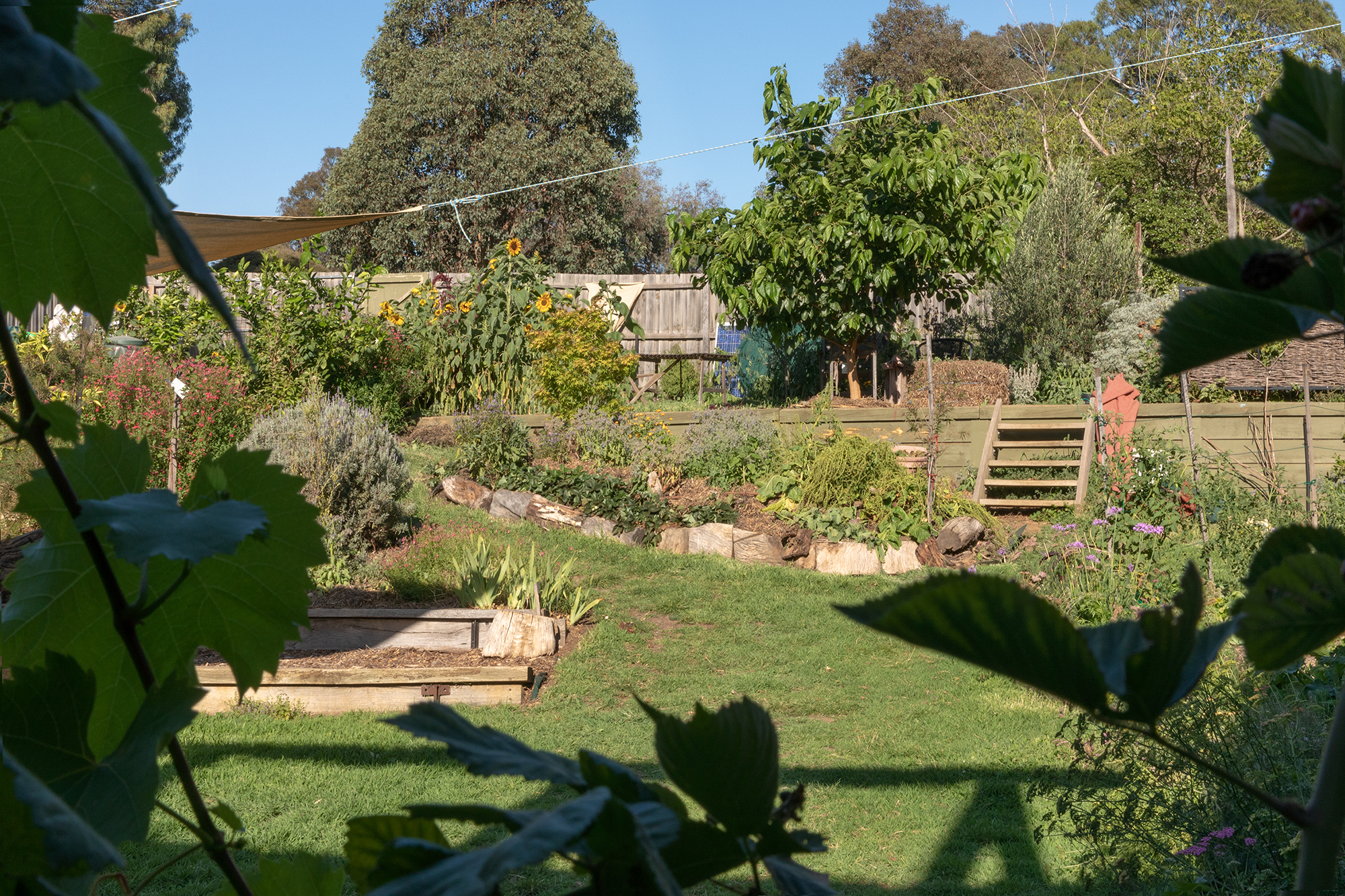
But, Jessica says, “It’s really incredible for kids’ personal development, their awareness and communication skills. They learn how to have meaningful interactions with a range of people in their own backyard, and they have a very real feel for what community means.”
Within the Australian housing co-operative network, Murundaka is considered the flagship model: the only integrated, collocated co-operative in the entire CEHL. (Some other co-ops have bought into single-site developments, but that’s usually not the entirety of their housing stock – and none are rental-only.) The co-op’s environmentalist ethos is visible in everything from the commitment to renewable energy, to the sophisticated recycling system (at 1.5 bins of waste a week, the 35-strong co-op is nearly zero-waste) and a resource share room in which spare materials are collected for reuse. Residents are encouraged to borrow, make, repair, swap, scavenge, make or do without, before throwing away or buying new. (The poster on the wall urges: ‘Always consider the things you buy.’) Some residents have car-sharing arrangements, and others have electric bikes.
But while Murundaka is treated as the jewel in the co-operative crown, it is also sometimes seen as the prodigal child. Dave notes that in the last decision-making process he was part of, of the 30 pieces of feedback CEHL received from the entire state of Victoria, “18 came from here.” The level of awareness and engagement present in Murundaka can make it difficult to fit under the common co-operative rules, Jess says. “When they make regulations [in CEHL], they are stipulating for hundreds of properties across Victoria and various co-operative models, and co-housing doesn’t always fit neatly under the banner. We need to get really involved with consultations to make sure that our voices are heard. Then again, that’s what co-operativism asks for.”
Later, I watch recorded footage of Giselle Wilkinson, one of the co-founders of Earth, and the woman whose family home had occupied the site on which Murundaka today stands. Speaking in what is now the common house, she talks about the layering crises she felt looming over our society and our planet, with the overarching threat of climate change: “[It] pushed me to do what was probably the most radical thing I’ve done in my life, which was let my co-op home, where I’d lived for nearly 20 years and raised my children, be bulldozed to make way for this.”

Until then, Giselle was living a standard suburban life – albeit in a co-op – with two children, dogs, chooks, an orchard. Giving it up was a tough decision. But, she adds: “I did it because I understood that, for us to really grapple with the transformative change that is required to deal with climate change and many other crises – we need to address it in the suburbs. We can’t always be looking at greenfield sites and going out, away from where the infrastructure and the services are. Most people live in the suburbs around the world, so the suburbs is where the change has got to happen.”
Back in the Murundaka, we’re standing on the platform overlooking the rooftop solar panels. The solar farm cost $30,000 to install – funds raised by the residents – and does not even belong to the co-op: it was immediately gifted to CEHL so that it could be insured. The only benefit Murundaka residents receive, Jess and Dave explain, are lower electricity bills. However, the community’s goal went beyond reducing living expenses: they wanted to provide an example to other communities for grassroots ways to transition to renewable energy. In a country where home ownership is the key to personal wealth, this way of thinking, which privileges social benefit over individual gain, is quietly but truly revolutionary.
All around us, the tops of the trees are billowing in the gentle wind. “I’ve been in Melbourne for 13 years and I’ve been in the inner North for most of that time,” Jess tells me. “I really never saw myself living in the suburbs proper. And I have to say, I actually really like the vitality of the wider local community. There are lots of people in our neighbourhood doing life in a sustainable and socially responsible way. We have a local urban farmer delivering organic produce boxes, socially inclusive arts communities, a vibrant rough trade network, and monthly Sunday gatherings in the local playground. Some people are literally knocking down their back fences to get more connected to their neighbours. It’s quiet, but when you get involved you can definitely hear a hum of positive change around here.”

